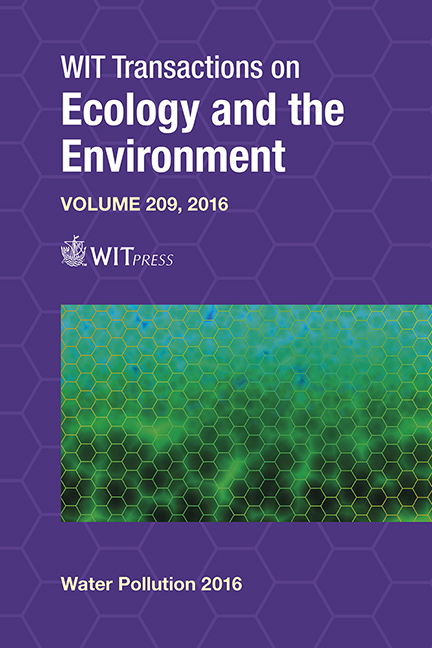Graphene Oxide Composite Membranes As A Potential Candidate For A Desalination System
Price
Free (open access)
Transaction
Volume
209
Pages
8
Page Range
45 - 52
Published
2016
Size
1,115 kb
Paper DOI
10.2495/WP160051
Copyright
WIT Press
Author(s)
H. Kim, Y. H. Oh, B. L. Yang
Abstract
Availability of clean water is a critical issue all over the world. In order to solve this problem, many efforts such as distillation and membrane based filtration were attempted to obtain clean water from seawater as it is an earth abundant water source. Forward osmosis research has recently been interested worldwide for desalination to supply drinking water, industrial water and agricultural water because a conventional reverse osmosis required high operating pressure which increases the running cost of desalination facilities. Currently, the graphene materials have been significantly studied because of their outstanding properties such as multifunctional surface and favourable hydrogen bonding with water molecules. In this study, we report comparative studies of commercially available forward osmosis membrane (aquaporin, sterlitech) with graphene oxides and carbon nano-tubes. The morphologies of graphene oxides and carbon nano-tubes coated aquaporin protein membranes were characterized by scanning electron microscopy. Furthermore, the salt rejection from conductivity measurement of draw solutions and the water flux of graphene oxides and carbon nano-tubes composite membranes in forward osmosis system were studied, respectively. From these results, we realized that among the characterized membrane graphene oxide coated aquaporin membrane showed higher water flux and salt rejection properties because of hydrophilic surface and functional groups such as hydroxyl (-OH), a carboxyl (-COOH) and an epoxide (-O-) which are hydrophilic water molecules.
Keywords
forward osmosis, graphene oxide, carbon nano-tube





